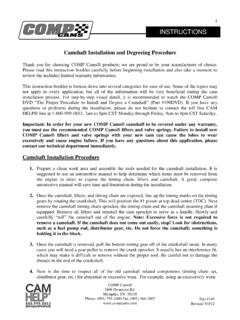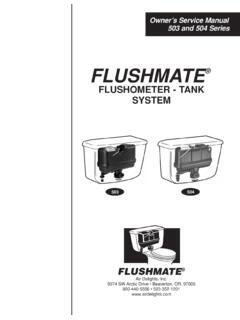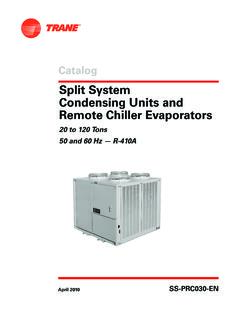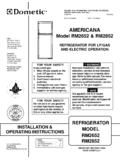Transcription of ENGINE OVERHAUL PROCEDURES - GENERAL INFORMATION
1 ENGINE OVERHAUL PROCEDURES - GENERAL INFORMATION 1988 Jeep Cherokee ENGINE OVERHAUL PROCEDURES - GENERAL INFORMATION ALL PISTON ENGINES * PLEASE READ THIS FIRST * Examples used in this article are GENERAL in nature and donot necessarily relate to a specific ENGINE or system. Illustrationsand PROCEDURES have been chosen to guide mechanic through engineoverhaul process. Descriptions of processes of cleaning, inspection,assembly and machine shop practice are included. Always refer to appropriate ENGINE OVERHAUL article in theENGINES section for complete OVERHAUL PROCEDURES and specificationsfor the vehicle being repaired.
2 ENGINE IDENTIFICATION The ENGINE may be identified from its Vehicle IdentificationNumber (VIN) stamped on a metal tab. Metal tab may be located indifferent locations depending on manufacturer. ENGINE identificationnumber or serial number is located on cylinder block. Location varieswith manufacturer. INSPECTION PROCEDURES * PLEASE READ THIS FIRST *NOTE: Always refer to appropriate ENGINE OVERHAUL article in the ENGINES section for complete OVERHAUL PROCEDURES and specifications for the vehicle being repaired.
3 GENERAL ENGINE components must be inspected to meet manufacturer sspecifications and tolerances during OVERHAUL . proper dimensions andtolerances must be met to obtain proper performance and maximum enginelife. Micrometers, depth gauges and dial indicator are used forchecking tolerances during ENGINE OVERHAUL . Magnaflux, Magnaglo, dye-check, ultrasonic and x-ray inspection PROCEDURES are used for partsinspection. MAGNETIC PARTICLE INSPECTION Magnaflux & Magnaglo Magnaflux is an inspection technique used to locate materialflaws and stress cracks.
4 The part in question is subjected to a strongmagnetic field. The entire part, or a localized area, can bemagnetized. The part is coated with either a wet or dry material thatcontains fine magnetic particles. Cracks which are outlined by the particles cause aninterruption in the magnetic field. The dry powder method of Magnafluxcan be used in normal light. A crack will appear as an obvious brightline. Fluorescent liquid is used in conjunction with a blacklightin a second Magnaflux system called Magnaglo.
5 This type of inspectiondemands a darkened room. The crack will appear as a glowing line inthis process. Both systems require complete demagnetizing uponcompletion of the inspection. Magnetic particle inspection applies toferrous materials only. PENETRANT INSPECTION Zyglo The Zyglo process coats the material with a fluorescent dyepenetrant. The part is often warmed to expand cracks that will bepenetrated by the dye. When the coated part is subjected to inspectionwith a blacklight, a crack will glow brightly.
6 Developing solutionis often used to enhance results. Parts made of any material, such asaluminum cylinder heads or plastics, may be tested using this process. Dye Check Penetrating dye is sprayed on the previously cleanedcomponent. Dye is left on component for 5-45 minutes, depending uponmaterial density. Component is then wiped clean and sprayed with adeveloping solution. Surface cracks will show up as a bright line. ULTRASONIC INSPECTION If an expensive part is suspected of internal cracking,Ultrasonic testing is used.
7 Sound waves are used for componentinspection. X-RAY INSPECTION This form of inspection is used on highly stressedcomponents. X-ray inspection maybe used to detect internal andexternal flaws in any material. PRESSURE TESTING Cylinder heads can be tested for cracks using a pressuretester. Pressure testing is performed by plugging all but one of theholes in the head and injecting air or water into the open are indicated by the appearance of wet or damp areas when usingwater. When air is used, it is necessary to spray the head surfacewith a soap solution.
8 Bubbles will indicate a leak. Cylinder head mayalso be submerged in water heated to specified temperature to checkfor cracks created during heat expansion. CLEANING PROCEDURES * PLEASE READ THIS FIRST *NOTE: Always refer to appropriate ENGINE OVERHAUL article in the ENGINES section for complete OVERHAUL PROCEDURES and specifications for the vehicle being repaired. GENERAL All components of an ENGINE do not have the same cleaningrequirements. Physical methods include bead blasting and manualremoval.
9 Chemical methods include solvent blast, solvent tank, hottank, cold tank and steam cleaning of components. BEAD BLASTING Manual removal of deposits may be required prior to beadblasting, followed by some other cleaning method. Carbon, paint andrust may be removed using bead blasting method. Components must befree of oil and grease prior to bead blasting. Beads will stick togrease or oil soaked areas causing area not to be cleaned. Use air pressure to remove all trapped residual beads fromcomponents after cleaning.
10 After cleaning internal ENGINE parts madeof aluminum, wash thoroughly with hot soapy water. Component must bethoroughly cleaned as glass beads will enter ENGINE oil resulting inbearing damage. CHEMICAL CLEANING Solvent tank is used for cleaning oily residue fromcomponents. Solvent blasting sprays solvent through a siphon gun usingcompressed air. The hot tank, using heated caustic solvents, is used forcleaning ferrous materials only. DO NOT clean aluminum parts such ascylinder heads, bearings or other soft metals using the hot cleaning, flush parts with hot water.









